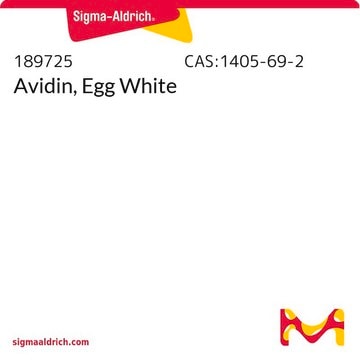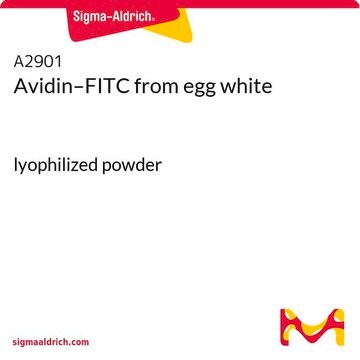A3151
Avidin–Peroxidase
lyophilized powder
Sinónimos:
Avidin-POD
About This Item
Productos recomendados
biological source
avidin from egg white
enzyme from horseradish
Quality Level
conjugate
peroxidase conjugate
form
lyophilized powder
composition
Protein, ≥70% E1%/280
extent of labeling
0.7-2.0 mol peroxidase per mol avidin
technique(s)
direct ELISA: 1:50,000
solubility
H2O: soluble 1 mg/mL
PBS: soluble
storage temp.
−20°C
General description
Application
Physical form
Preparation Note
Disclaimer
signalword
Danger
hcodes
pcodes
Hazard Classifications
Resp. Sens. 1
Storage Class
11 - Combustible Solids
wgk_germany
WGK 1
flash_point_f
Not applicable
flash_point_c
Not applicable
ppe
Eyeshields, Gloves, type N95 (US)
Certificados de análisis (COA)
Busque Certificados de análisis (COA) introduciendo el número de lote del producto. Los números de lote se encuentran en la etiqueta del producto después de las palabras «Lot» o «Batch»
¿Ya tiene este producto?
Encuentre la documentación para los productos que ha comprado recientemente en la Biblioteca de documentos.
Los clientes también vieron
Nuestro equipo de científicos tiene experiencia en todas las áreas de investigación: Ciencias de la vida, Ciencia de los materiales, Síntesis química, Cromatografía, Analítica y muchas otras.
Póngase en contacto con el Servicio técnico















